OK, if you haven’t figured it out by now, I’m a synthesizer geek. In high school my favorite bands were synth-heavy bands like Yes, Kansas and Styx, and my hero was Rick Wakeman with his banks of keyboards and flowing robes. I was even privileged to meet and interview Dr. Robert Moog when I was in college, and I tried to learn all I could about music synthesis.
Back in the 1970’s I would drop by Pecknel Music and drool over the Minimoogs and ARP 2600s they occasionally had on display there. And drool was all I could do, for at prices ranging from $2000-$3000, these were far beyond my reach. When I finally got a teaching job and could purchase my own synthesizers, we were well into the Digital FM Synthesis days of the 1980’s. Musicians were already reminiscing about the fat analog sounds of the old monophonic synths of the 1970’s, something they still do.
…And that nostalgia seems to be paying off. Many of the old synths, or at least the concepts behind them, have been recreated as VSTis, and now these are being ported over to the iPad and iPhone. Technology that used to cost thousands of dollars is now available as a $4.99 app. But there’s a trap…with the cheap price you may find yourself wanting ALL of the available synths, and still wind up sinking a ton of money for apps you’ll use a couple of times and forget…still cheaper than a vintage synth, but pricey all the same.
The thing that makes these virtual iPad synthesizers even more powerful is the inclusion of an external keyboard. The little Akai LPK25 keyboard works well for the iPad, but doesn’t work with the iPhone. Both the Line 6 MIDI and iRig MIDI interfaces work with both devices. Below I’ve got the iPhone and iPad connected to an old Peavey MIDI keyboard.
This is also a relatively inexpensive way to breathe new life into old keyboards. As long as MIDI has been around it’s been possible to expand existing keyboards with various sound modules. However, these were/are hardware devices, and are in some cases as expensive as a new keyboard. VSTis make it possible to expand the sound range for a fraction of the price.
In my previous post about iPad DAWs I mentioned that Garage Band and NanoStudio have built-in synthesizers. Garage Band lets you change some of the settings for the synths, but it’s not what I would consider a synthesizer app. All you can do is make slight alterations to existing sounds. NanoStudio, on the other hand, does have greater control over the creation of synthesized tones.
Since I’ve already mentioned these in the context of DAWS, I’ll skip them for this post and focus on apps whose primary emphasis is tone generation and synthesis. Many of these apps also incorporate DAW components such as on-board recording and sequencing. However, I’m going to focus just on the synthesizer portion.
Korg iMS-20
Korg was an early adopter of iPad technology, and has been creating iOS versions of many of their hardware products, such as the Kaossilator and Electribe devices I mentioned in my DAW post. The Korg iMS-20 is a realization of its vintage MS-20 analog synth, and it has tried to stay true to that device, with some additional features. It even features virtual patch cords for connecting various segments and oscillators to each other.
There are also two X-Y control pads, drum sequencer, and a variety of other input modes.
This app is not really for the casual musician or faint of heart. There is a steep learning curve, and the user interface is not intuitive. However, the sounds do hearken back to the old analog days, and are quite rewarding. This is a serious instrument packaged as an app. Here is a sample of sounds from the iMS-20…
Animoog
Another storied name in musical synthesis, Moog, decided not to just recreate one of their old synths for the iPad. The Animoog app uses a new “Anisotropic Synthesis Engine” which takes advantage of the iPad’s unique features.
It’s also a curious mixture of old and new. There are virtual knobs for the old analog synthesizer settings, and what appears to be an old-school oscilloscope on the main page. However, the virtual keyboard looks nothing like the standard black and white keys on a piano.
The Animoog keyboard takes advantage of the touch capabilities of the iPad. The scales are completely customizable, and you can slide from one note to the next for various effects. You can also slide your finger up and down the key itself to change modulation. While the Animoog can be played from a MIDI input device, its true potential is realized through its unique virtual keyboard.
The oscilloscope isn’t just for show. You can define points along the X-Y graph that alter various tonal colors and modulation. It’s not as hard as it sounds, and after some experimentation you get the hang of it. It also makes for a beautiful display of the sounds as they are generated, based on the complexity of that sound.
Here are some samples of the Animoog sounds. You can hear that it’s a bit more experimental, and less like a traditional instrument. I tried to use some of the same riffs as I did with the iMS-20 for comparison, in some cases that just wasn’t possible.
Sunrizer
So far we’ve hit Korg and Moog. The next big name on the list is Roland, however, that company didn’t design this next synth. The Sunrizer synthesizer app from BeepStreet was based on the SuperSaw sound emulation in Roland’s JP-8000 synthesizer. Though touted as an analog synthesizer, some of the sounds are more reminiscent of the lush pads found in FM digital synthesis. There are also lots of arpeggiator effects.
The user interface is much cleaner on this app than on the Korg iMS-20 or Animoog. There is just one main page, with drop-down menus for other items. It seems more straightforward, and would probably be a better synthesizer for someone wanting to learn about the process.
Here are some examples of the Sunrizer sounds…
NLog MIDI Synth
To round out this collection, there is the NLog MIDI Synth from Tempo Rubato. Tempo Rubato makes three versions of this synth – an app for Mac OS, an app specific to the iPad, and this app for the iPhone. I went with the iPhone app because it’s cheaper.
As with the Sunrizer interface, this one is fairly straightforward. There are the usual virtual knobs for analog oscillator controls, but there is also an X-Y pad for modulation.
I’m not sure how the iPhone app differs from the NLog Synth Pro for iPad, but it has some great sounds in its own right. Here are a few samples…
Geo Synthesizer
The Geo Synthesizer from Wizdom Music is very different from the others listed here. It’s not a tone creation device like the other analog synths, but is more of a specialized MIDI controller. It will work with other MIDI apps, and even control those apps.
Instead of a virtual keyboard, the layout is more like a fretboard on a guitar. You have repeated notes on the different lines, and you can pull and bend the note, much as you would do with a guitar string. One setting makes it very easy to run arpeggiated chords very quickly.
I didn’t record an samples for this instrument. However, there are several YouTube videos on Wizdom’s home page.
As I said, buying virtual synths for the iPad can be addictive. The average price for a decent synth is around $15 – $20 per app. I’ve been lucky with some of the ones listed here because I caught them at an introductory price, just as they were being introduced for either the iPad or a new version was made available for the iPhone. I was able to pick up most of them for about $5 each. There are also a few decent free versions. What I’ve found, though, is that after a point they start to look and sound alike. My suggestion is to find one you like and stick with that for awhile.
One last note – all of the samples in this post were played on my Akai LPK25 keyboard and recorded from my iPad onto a Tascam DR-05 recorder. These were then uploaded to the Chirbit audio hosting service.
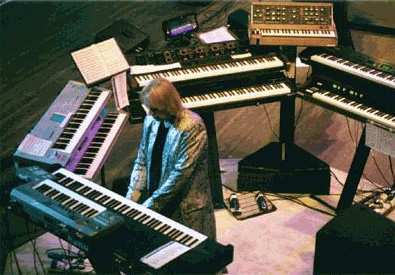

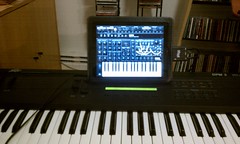
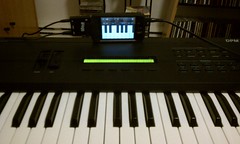
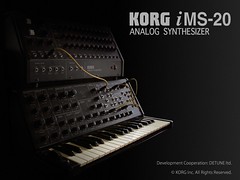
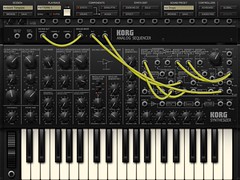

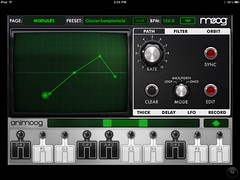
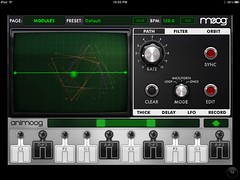
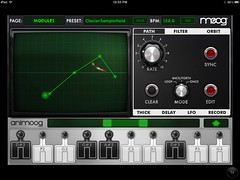
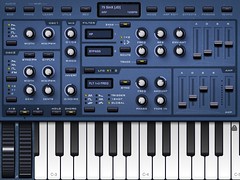
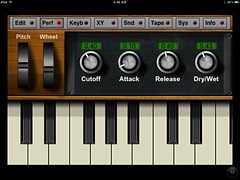
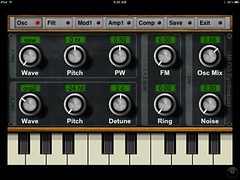
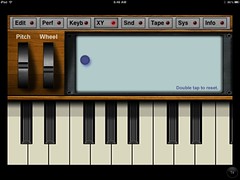
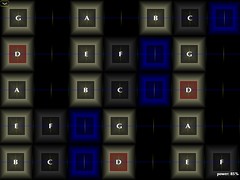
Hey, nice post! I’m trying to learn about music synthesis, can you recommend some books, apps or anything for the begginer?
Bye!